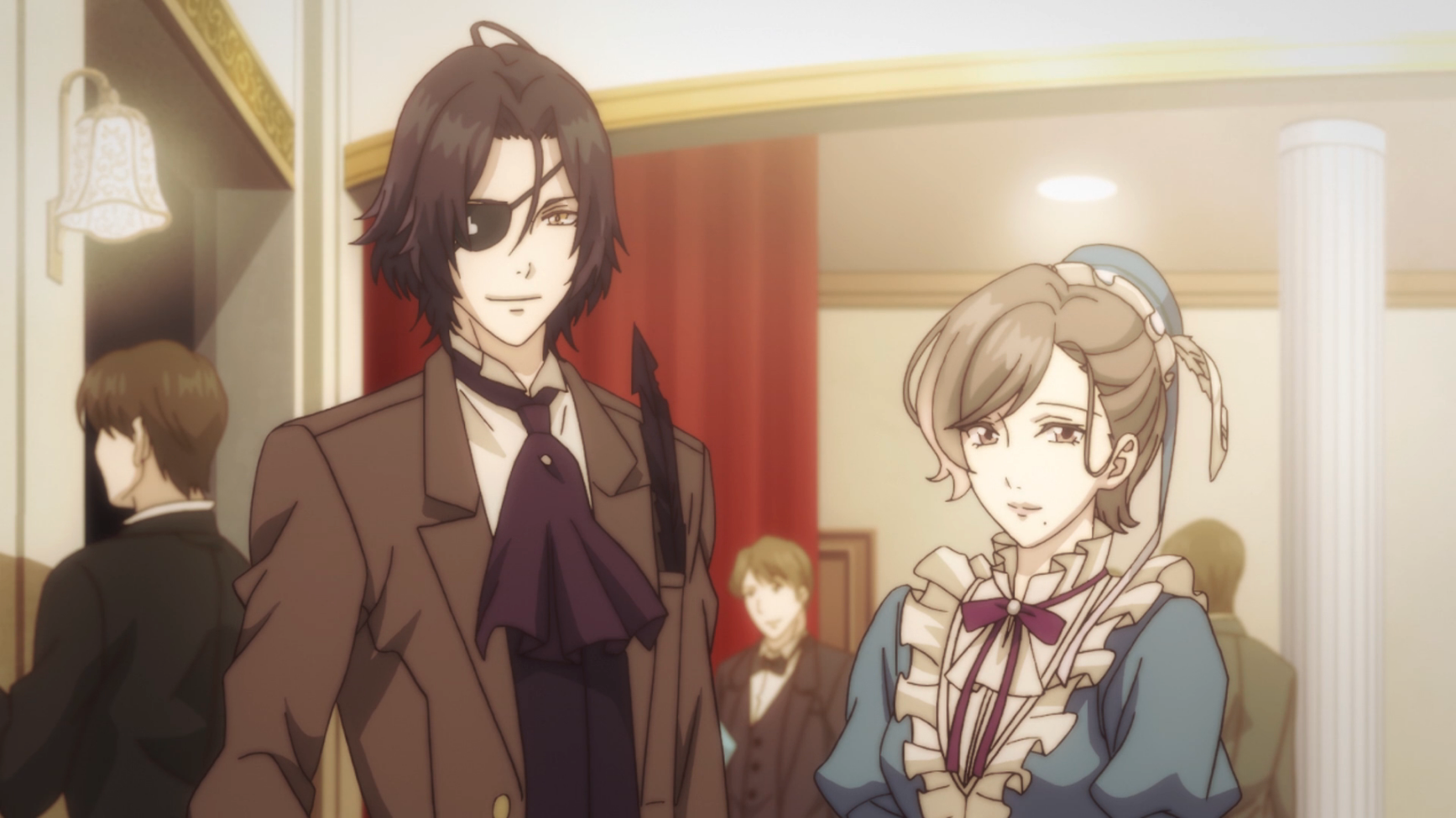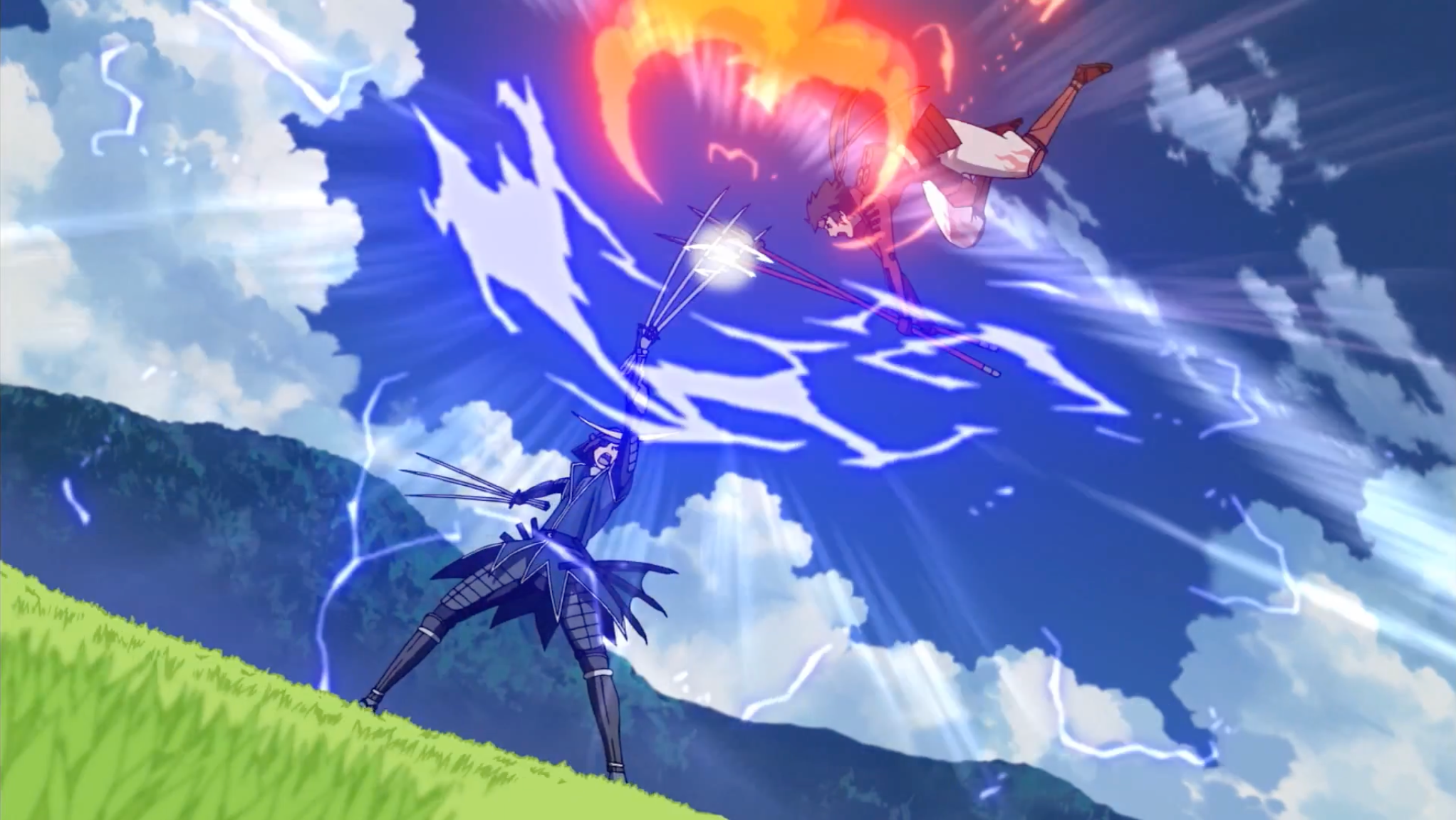Favourite Anime and Manga Based on Video Games
If you’ve been following media news, especially around the time The Last of Us premiered on HBO, you might have seen or heard the phrase ‘The video game curse’ over and over. The phrase, mostly coined by journalist and reviewers of Western media, is meant to disregard older video game adaptations as mediocre both in quality and financial performance at the box office, usually invoking the likes of Super Mario Bros., Mortal Kombat: Annihilation, and many of Uwe Boll’s attempts from Bloodrayne to Far Cry. But the people who used this phrase recently seemed to have completely disregarded video game adaptations since the 2010s, and block out all animation adaptations. If you’ve been paying attention to cinema from 2010s, you’ll see much more positively received movies from the likes of Pokémon: Detective Pikachu to Sonic the Hedgehog. And when it comes to animation, they have been successful for years; not just Netflix’s Arcane, but anime has been producing not only financially successful but also well-received video game adaptations. So, the Anime UK News team want to highlight some of the best video game adaptations we’ve enjoyed, and hopefully put the ‘video game curse’ to bed, once and for all.
Ian Wolf
If we are talking about beloved video game anime adaptations that have been around for years, as far as I’m concerned there is one really obvious place to start.
It was the first ever anime series that I ever watched, so there is an argument to say I would have never have got into the medium without it. It is a series that is so adored, that not only does it have that rare accolade of being aired on British TV, it has been shown in some form or another on BBC, ITV and Sky. It has been shown in nearly 200 countries, with over 1,200 episodes and counting, has aired continuously ever since it debuted on 1st April 1997. The series in question is, of course, Pokémon.

You can certainly argue that it is the greatest video game adaptation of all time, even over The Last of Us. It certainly trumps it in terms of longevity. As a child, I remember to this day when Sky One had a Pokémon marathon in around 1999-2000, which led to a listing in TV Quick that read: “Parents are advised to take the dog out for a very long walk.”
This is probably why a series like Pokémon would get overlooked by Western critics when it comes to arguments over video game adaptations. There is always going to be that element of snobbishness because it is a kids show. The fact that it is so long-running could also compound the problem, as new characters and creatures are constantly being introduced, so critics fresh to it may have problems understanding the full context of the show – see just about any review of a Pokémon film in The Guardian. However, anyone who has been regularly following the adventures of Pikachu and Ash Ketchum (or Satoshi to give him his original Japanese name) cannot help but feel an attachment to him. This is especially true in the various tournament arcs, with Ash losing in his early years, only for him to finally rise to the top after 25 years of hard work. An amazing achievement, given that he has never seemingly aged a day, having remained 10 years old since the 1990s.
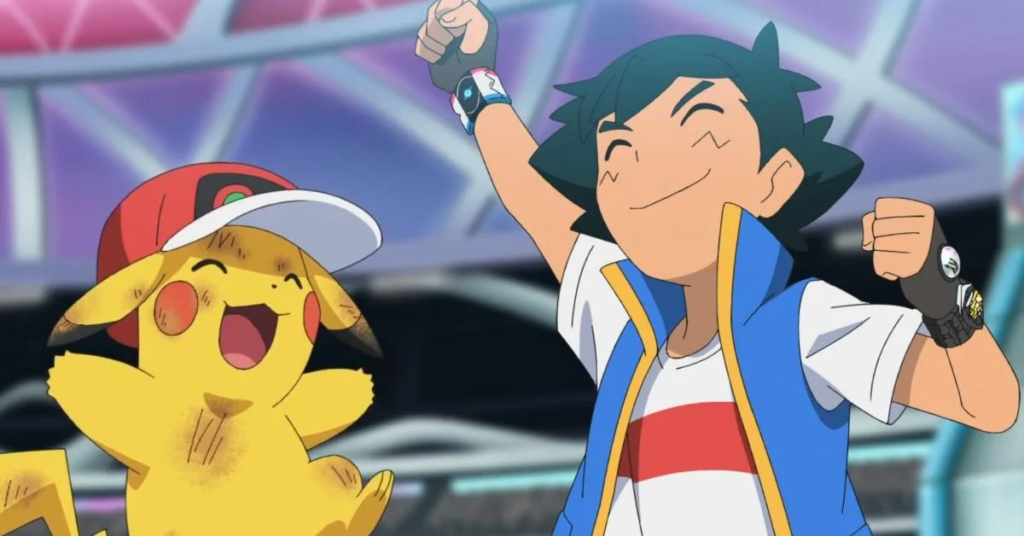
Of course, the never-aging Ash is one of several issues the Pokémon series has: others include the banning of episodes for things ranging from the use of guns by characters (which is really annoying as that was the episode in which Ash caught his herd of 30 Tauros) to one episode infamously blamed for causing epileptic seizures in over 600 children in Japan. There have been some controversial changes in animation style too. Also, how come after all this time Ash has never seen through any of Team Rocket’s disguises? Even if Jessie and James fool you, they’ve got a talking Meowth! That’s a dead giveaway!
Ash is soon to leave the Pokémon franchise, with two new characters, Liko and Roy becoming the new regular characters next month. If you are worried you will miss Ash, however, don’t worry, because one of the best things about the show is that there are so many places you can watch it. The BBC iPlayer has multiple older seasons to stream now, the children’s channel POP is broadcasting the most recent series, Netflix also has Pokémon on its service, and there is even the Pokémon TV app, one of the most niche streaming services around. So there is plenty to keep people entertained, and not just children.
However, perhaps the most important thing about Pokémon is this: given how widespread and how long-lasting the show is, the craze that developed around both the anime and the games, and the fact that it is child-friendly, meaning it could be watched by so many people without offending anyone, there must be a genuine claim that Pokémon introduced anime and indeed manga to more people around the globe than any other series. If you wanted an ambassador for the entire anime industry, Pikachu has to be the No. 1 candidate.
If you are still put off by the idea of watching a “kids show”, there are other options out there. Video game adaptations have been key to helping some of the biggest names in the anime. This is true in the case of the anime studio Kyoto Animation. While KyoAni’s first series was a spin-off to the mecha series Full Metal Panic!, three of their earliest series were adaptations of visual novels by the studio Key – 2005’s Air, 2006’s Kanon, and 2007’s Clannad.
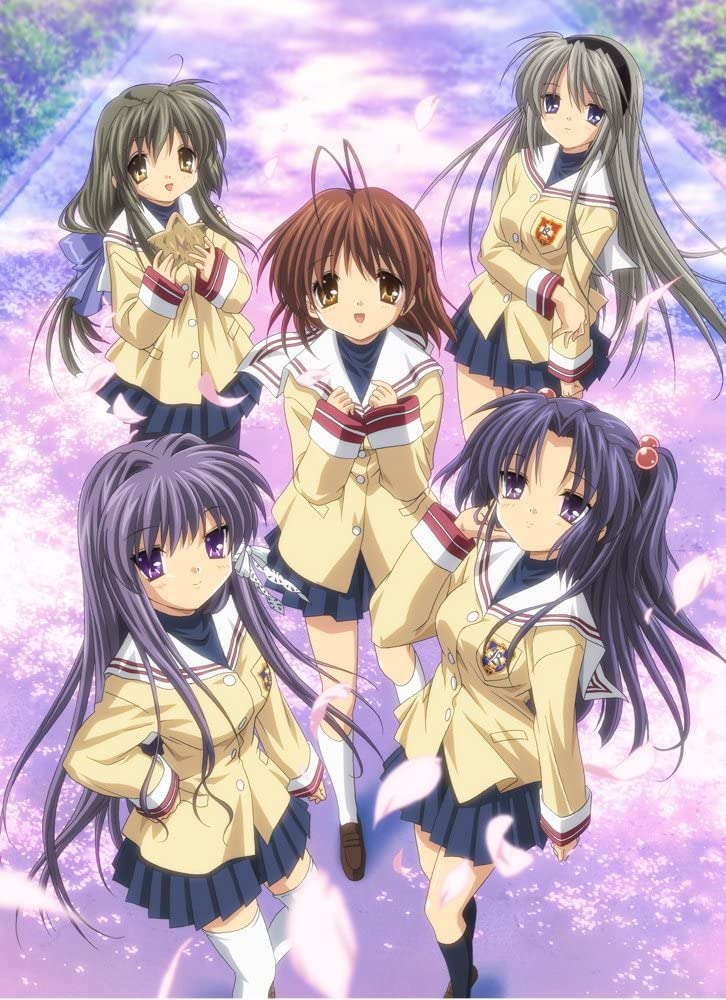
While the games were originally more erotic, the anime adaptations of these stories got rid of the sexual material, which is probably for the best. The adaptations concentrate on the romance as well as occasional elements of comedy, but mainly the thing that these series are noted for is tragedy. Air deals with subjects like illness, death, abandonment, and mental health, Kanon covers suicide and Clannad has so much tragedy in it I dare anyone to watch and not want to cry. All three of these series are brilliant, but Clannad in particular is, in my opinion, one of the best anime ever.
Onosume
Most adaptations of video games into anime series are designed to act as marketing tools to promote and further sales of the actual game they are based on. Some are more successful at this than others, as I’ve ultimately seen very few that actually made me buy the game afterwards. One of the ones that did pull me in however, is Danganronpa: The Animation.
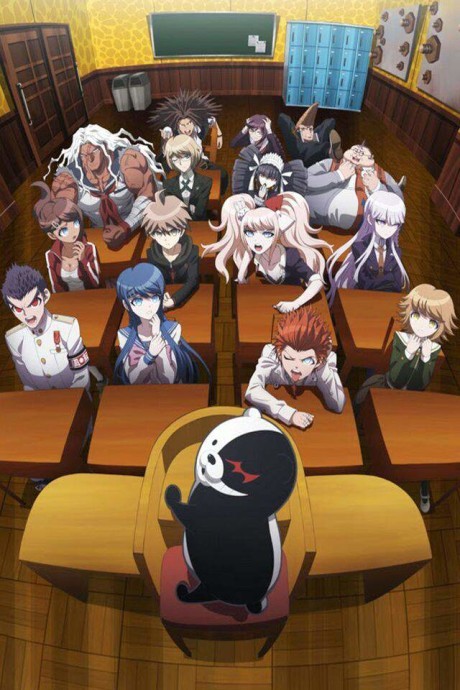
Airing in 2013 and animated by Lerche, the series adapts Trigger Happy Havoc, which sees Makoto Naegi enrol in Hope’s Peak Academy, an elite high school which only takes in the ultimate students in their respective field, plus one lucky student who gets in by lottery (in this case Makoto). However, instead of enjoying their high school life, the sixteen ultimate students are trapped in the school by a weird black and white bear known as Monokuma, who tells them that the only way out is to kill one of their fellow students and not get found out during the deadly classroom trial that follows. Teaming up with some of the other students including Ultimate Detective Kyoko Kirigiri, Makoto must make it through Monokuma’s killing game and work out who’s really behind it all.

While the series isn’t the best example of a video game adaptation, as it lacks the space to flesh out the investigations and all of the different characters, rushing through the game’s plot line in just 13 episodes, I was still able to latch onto and love the entire concept of the story and get into the heads of the main characters enough to sell me on actually buying the game. I think the main thing it has going for it is its style, as it carries over the artwork and themes from the game really well, giving it a downright crazed aura. You see this through the eyes of the characters as well, thanks in part to Monokuma, excellently voiced by Nobuyo Oyama. I also found that, because of this style over substance approach, it was also a bit easier to get into than other mystery series for those who may not be quite as into the genre as others.
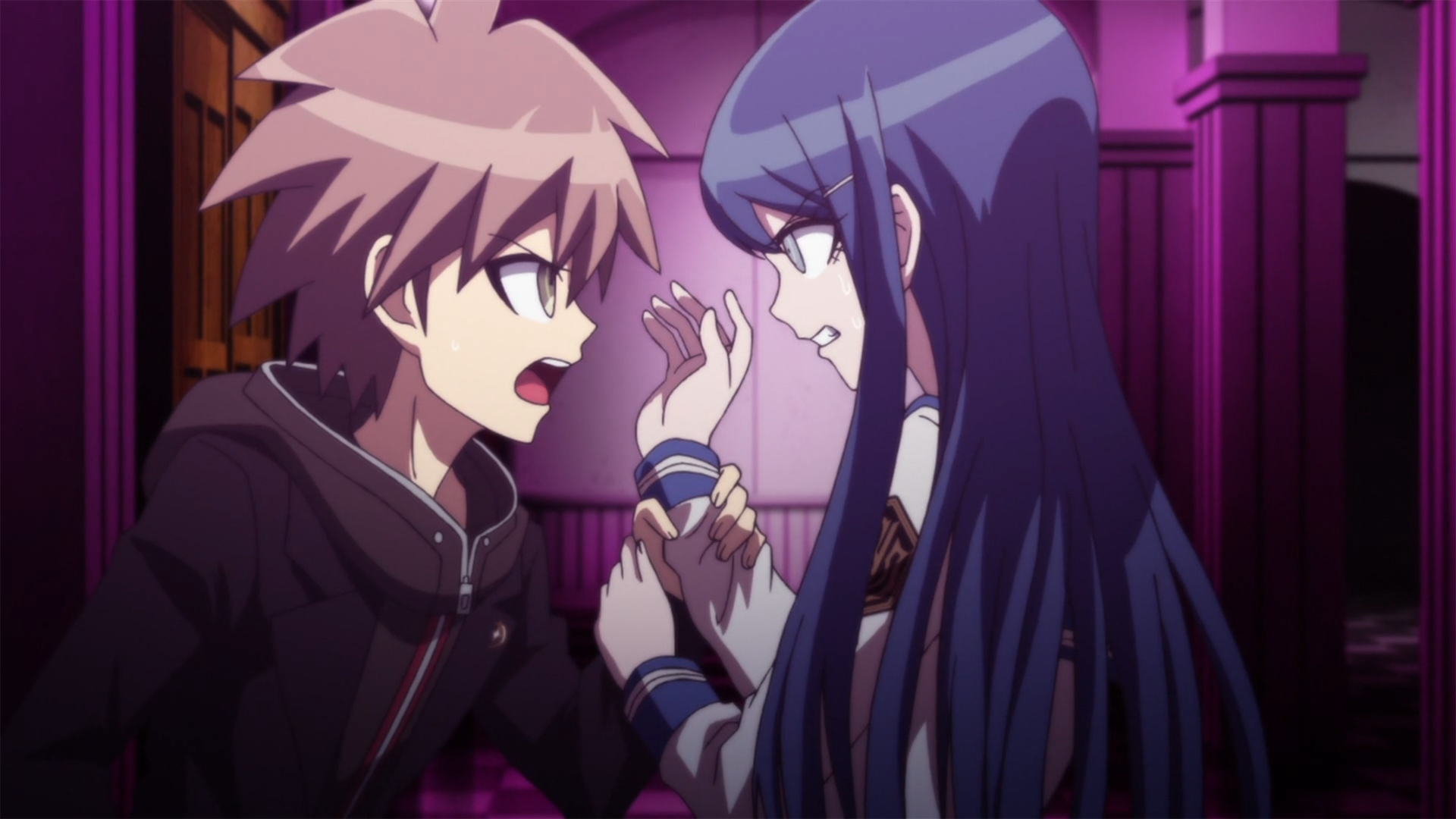
And that is where I think this series stands really, as an approachable, stylistic gateway into both the game series and the murder mystery/killing game genre, where, in terms of promoting its source material, it absolutely succeeds. While the games are widely available across all platforms these days, if you do want a taster before digging in more widely, then I’d recommend checking out the series on Crunchyroll.
HWR
Video-game adaptations are tricky, whatever the medium, as the process of trying to condense considerably bigger storylines into a handful of episodes or a film is no easy task. If the source material being adapted is a potentially 100+ hour JRPG, then there’s even more complexities involved.
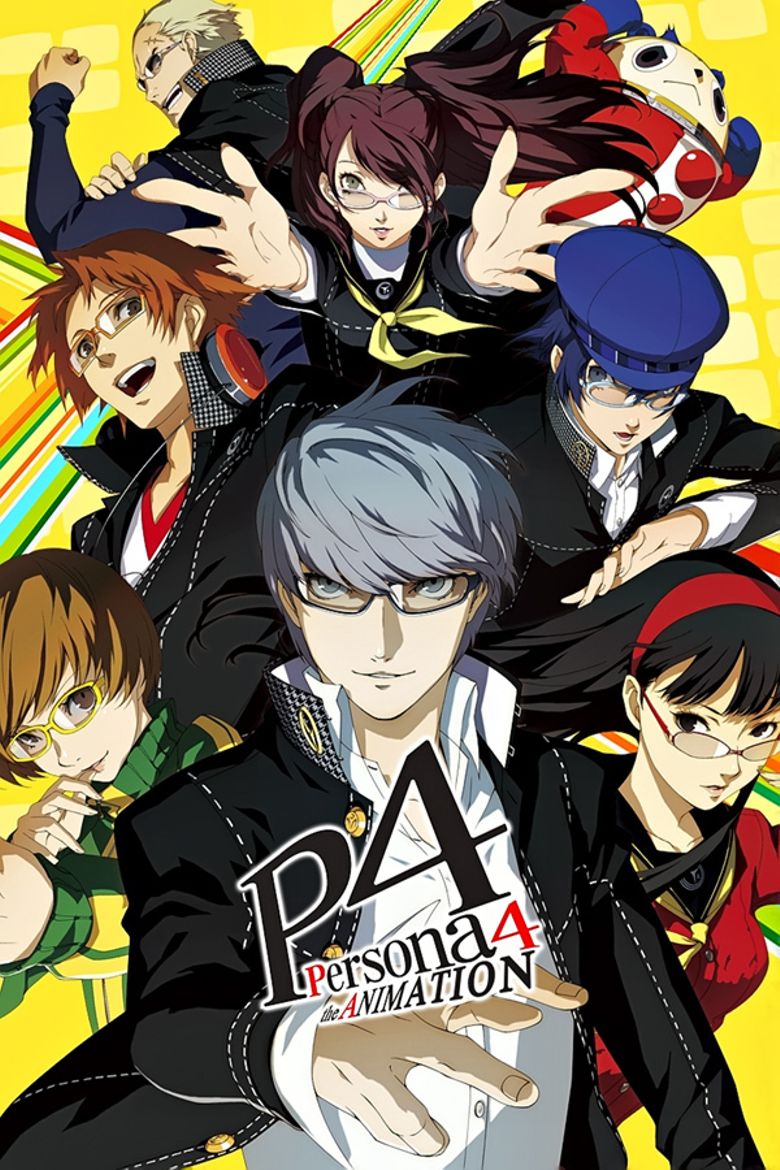
Persona 4: The Animation, to date, is the strongest video game adaptation I’ve seen, and certainly the best for the Persona franchise – besting the four decent Persona 3 films and the lacking Persona 5 anime. What makes the series such a standout is how it carves an identity, not just as an adaptation of a social link-heavy story, but also as a comedic and often tongue-in-cheek anime, which packs in just as many laughs as it does serious story beats.
The story of Persona 4 as a game is more or less faithfully adapted here (there’s no Persona 4 Golden content, though this did get its own mediocre anime adaptation later on), and tells the premise of serial murders that keep occurring in the small town of Inaba, with main protagonist Yuu Narukami moving to the area for a year, sharing the home of his uncle and cousin, enrolling at Yasogami High School, and subsequently befriending fellow pupils Yousuke Hanamura, Chie Satonaka, and Yukiko Amagi.
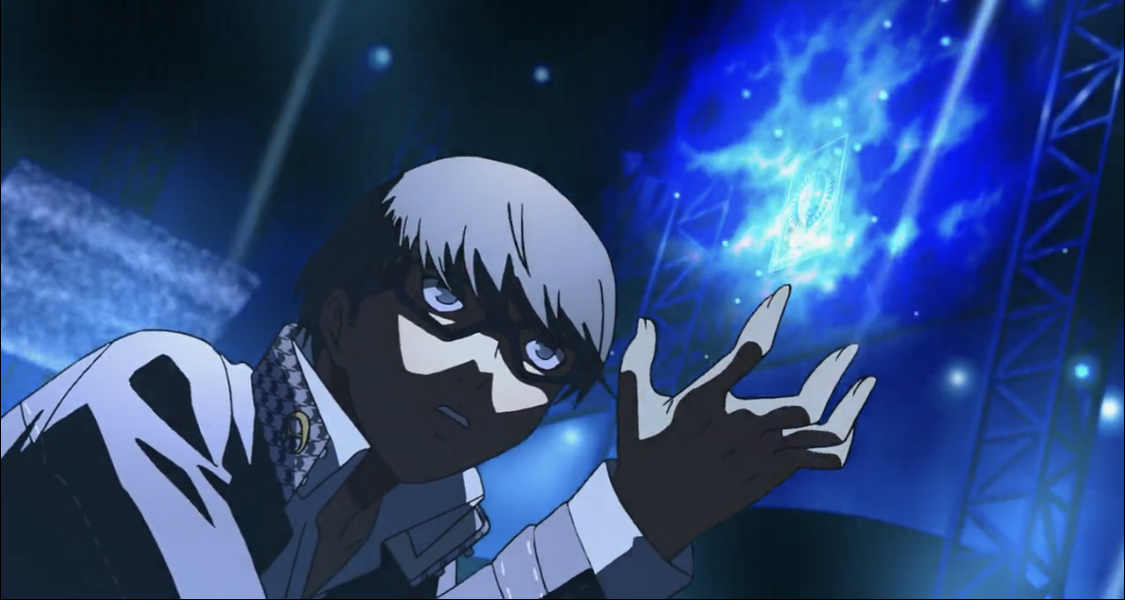
The core focus of the group quickly becomes the urban legend known as the “Midnight Channel”; a mysterious TV channel that only appears at midnight on rainy days while the viewer is alone. Matters escalate quickly when the legend turns out to be true, and is tied to the ongoing murders taking place in Inaba, with Yuu’s friends soon becoming potential victims of the phenomenon unless he can awake his “Persona” and help them face their inner demons, manifested within a “Shadow World” housed within the TVs, taking on various forms including a steamy sauna and a seedy club.
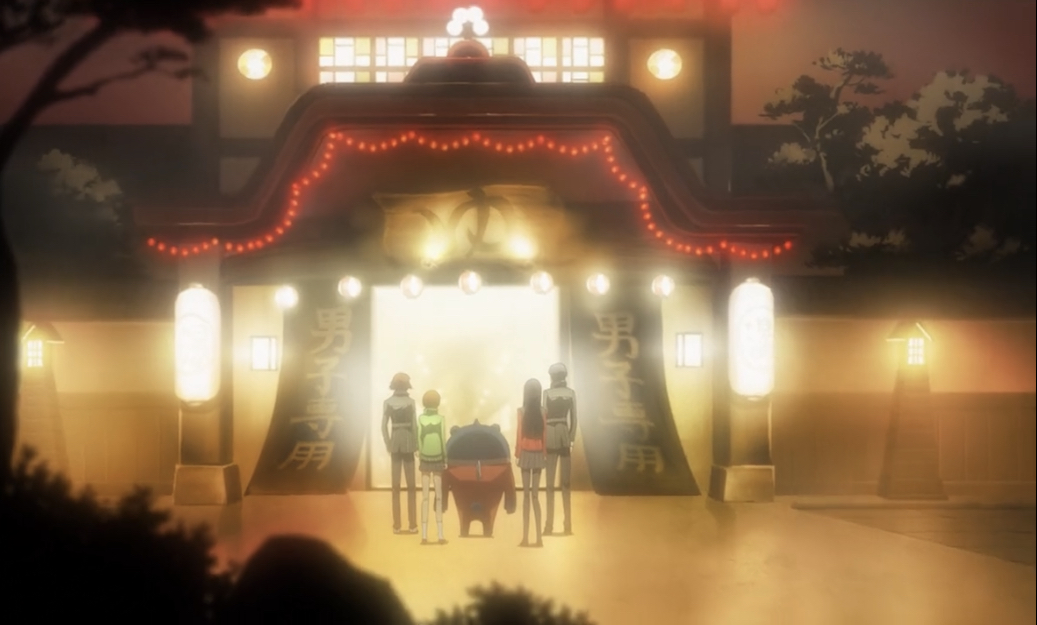
The series does a good job of explaining its premise – a benefit of the emphasis on cutscenes and dialogues throughout the game. What I especially enjoyed about this anime, and the source material, is the supporting characters that made up the party roster, and how they are given their time to shine and develop, with plenty of banter and scenarios that occur as the cast grows with each Midnight Channel mystery to solve and inner demons to resolve.
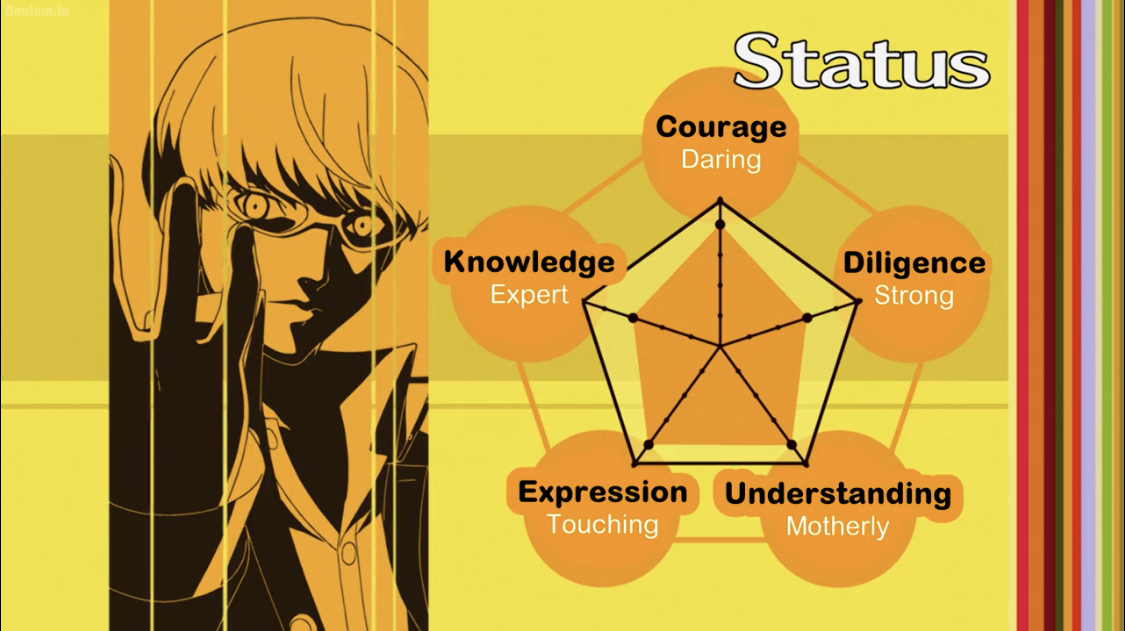
I also like the little details: scenes referencing side quests and the stats charts that update as the story progress are also faithful to the original game. With the recent re-release of P4G on consoles, there are now multiple ways to enjoy and appreciate this modern classic!
Demelza

I can only agree with my fellow writers that when it comes to video games turned into anime or manga, Pokémon and Persona are the two franchises that stand out to me. But another favourite of mine is the Professor Layton and the Eternal Diva film. Based on the popular puzzle game series this movie outing saw protagonist Professor Layton and sidekick Luke tasked with figuring out the mystery of someone who claims to have discovered the key to eternal life. They travel to the Crown Petone Theater for a special opera performance, but what should be a relatively safe case quickly becomes one of life and death.
The great thing about Professor Layton is that although the games have an ongoing storyline, the plots are also self-contained enough that you can insert new stories in the timeline fairly easily. And that’s just what studio team P.A Works (who provided anime cutscenes for the games too) and OLM worked together to do. The story we follow here is one that’s not in the video games and that works to its credit since it doesn’t rely on knowledge of the games to get viewers up to speed on what Layton and Luke do. It’s something fans and newcomers alike can enjoy, which is always important with these kinds of works.
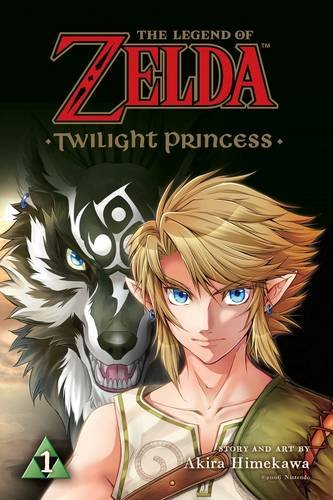
Where a lot of anime and manga adaptations fail is their insistence on adapting the original story into the new medium, but just like with Professor Layton and the Eternal Diva, my favourite manga based on a video game also doesn’t take that approach. The Legend of Zelda has been lucky enough to have a vast collection of manga released over the years, each based on a different game in the franchise. Most of these don’t diverge from the original storyline too much, but the current series Twilight Princess pushes those boundaries and has been very rewarding to read because of it.
In the original game, protagonist Link doesn’t have a lot of personality because he’s just meant to fill in for the player, but in the manga, he has a lot of depth thanks to the rich history that mangaka duo Akira Himekawa has given him. Just as you’d expect of someone who’s unexpectedly been given the role of hero, Link struggles with doing the right thing and living up to the expectations placed on his shoulders. Twilight Princess ended recently with its 11th volume and having this much time allowed Akira Himekawa to both follow the path of the original game and insert a lot of original content that has made it an unmissable title if you’re someone who’s a fan of the franchise.
Darkstorm
I play a lot of video games. I have loved them since the tender age of three, when my mum purchased a Sega Mega Drive while she was on maternity leave for my younger brother. When it comes to anime adaptations of the games I love, however, they are often few and far between. Mostly they are made with an audience of kids in mind (Pokémon already spoken for, Sonic has had a few animated adaptations) or they just don’t get released over here in the UK (Star Ocean EX is one series I still wish to experience, as Star Ocean: The Second Story is one of my favourite games of all time). So, when racking my brain for anime video game adaptations, I was stumped, until I remembered that Visual Novels are video games too. So I have a controversial opinion to offer to the table… School Days!
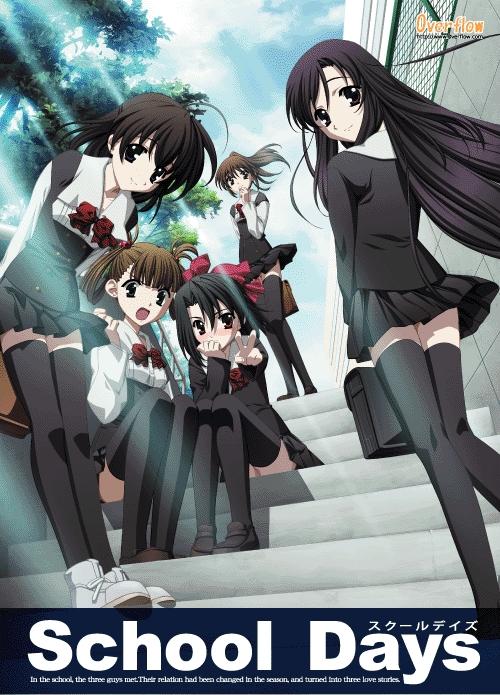
School Days is based upon a visual novel of the same name; the story follows Makoto, a teenage boy who has a crush on the beautiful but shy Kotonoha. When fellow classmate Sekai finds out about Makoto’s crush, she decides to help him. When Makoto gets his date with Kotonoha, and asks Sekai what she wants in return, she kisses him. This simple kiss sets off a chain reaction and a love triangle that changes all three students’ lives forever.
I think what sets this anime adaptation of a visual novel apart is that the anime doesn’t feel like it’s compensating in trying to adapt its source material. Some visual novel adaptations must censor, or outright cut out the sex scenes to make the anime more appealing to a general audience, for obvious reasons of course, but often don’t replace them with another character or relationship-developing scene. The anime versions must also be very strict with what they can and cannot adapt, choosing one route only to tell a streamlined, but often, less fulfilling story. With School Days however, there’s no compensating of any sort; the themes, characters and gut punches of the game are on full display in this anime adaptation. The game was made famous not only for its animated scenes (most visual novels rely on still images) and variety of choices, but also for its multitude of bad endings and not being afraid to show the dark side of teenage desires. It pulls no punches on what happens if Makoto decides to mess around and find out, and that’s what the anime version of Makoto does – we see one of the darkest sides of him in the anime, a side you can either see a little or a lot of, depending on your choices in the game. The anime is also good in its own right; the tension between the characters, as Makoto’s sexual desire grows and secrets pile on, just mounts, and grows with every passing episode, until it eventually explodes into the bloody and brutal ending that not only feels right for the anime’s story, but also true to the game’s tone as well. It’s an anime that made me feel that I got a good experience of what the video game is like, not a series that compensates for the sake of marketing the game. If you want to discover it yourself, you can watch the whole series on Crunchyroll.
I also want to give a shout out to Final Fantasy XV: Brotherhood; it’s a mini anime series that was made to promote the then up-coming latest entry in the Final Fantasy series. It’s well animated, provides some nice character moments for the main cast, and it’s also completely free on YouTube to watch right now!
Rui
Anime adaptations of video games have often been a mixed bag. My first big disappointment was when I imported the original TEKKEN anime. That experience taught me that no matter how many fun ideas the original game might have had with its robots, kangaroos, dinosaurs, curses, action and dark pacts, a production company can find a way to churn out a thoroughly mediocre adaptation, with cheap animation which fails to capture anything that made the game fun in the first place.
Things have improved since then, thankfully, and we’ve seen many high quality animated spin-offs of games that have repaired the damage done by the weak efforts that once haunted the genre. Looking at my personal list of favourites, I think it’s safe to say that in most cases I prefer an anime outing which captures the spirit of the original more than a slavish reproduction of the game in a different medium. If I want a serious, gritty, immersive storyline – especially one which takes hours to get to the point – I probably want to play the original game. This season’s moody adaptation of NieR Automata is (so far) one of the rare cases of a lore-heavy story making the transition between mediums relatively successfully instead of drowning the viewer in excessive worldbuilding. When I’m putting the controller down and letting the anime staff dictate the pace, I want to be entertained. It also feels as though the very best adaptations are those which can be enjoyed by newcomers and provide a way for them to connect with fans of the game without feeling lost or patronised. I never played Capcom’s short-lived action game Ixion Saga, but I loved every second of Ixion Saga DT, its stupid isekai anime spin-off.
An anime adaptation also offers a way for game series, which haven’t found their way west, to find an audience outside Japan. Fate and When They Cry are probably the most prominent examples of series which greatly benefited from this at a time where any of their games getting an official English release seemed like an impossible dream. And that’s still happening today; until relatively recently, the anime adaptations of otome games in particular were the only way that English-speaking fans could fully enjoy their stories. My favourite of these is the supernatural period mystery The Libra of Nil Admirari. I’d love for the original games to make their way west but that looks increasingly unlikely with every passing year.
Otome games make the jump to anime surprisingly well because the shorter plot arcs can often be compressed fairly seamlessly. The only tricky part is how to handle the central romance in a story which was originally made up of many different branching paths. Either the creators blend all of the storylines together as an introduction to the game while still leaving plenty of reason to play the original, or they focus solely on one love interest’s storyline and relegate the rest of the cast to playing the part of side characters. If a series becomes popular enough, like Uta No Prince-sama or Hakuoki, follow-up seasons can allow the wider cast plenty of chances to shine. Both of these adaptations stand up well on their own. I’d wager that some of their fans don’t even realise that they started off as otome games because they’ve sidestepped the ‘video game curse’ so neatly.
One other modern advantage of video game adaptations is in capturing the ephemeral joy of a mobile game, a genre which has exploded over the last few years. With traditional video games you can always rely on being able to discover them late via a used copy, a remaster or a sale, yet oversaturation in the mobile market means that a lot of games disappear without a trace if they don’t hit it big in their first year. And once they’re gone they’re usually gone for good, together with their characters, storylines and worlds. Those which manage to achieve an anime adaptation while they’re still at the height of their popularity are effectively creating a time capsule. I’ve written before about the wonderful DamePri Anime Caravan, a completely overlooked gem based on a mobile game that existed for just three years before ending service. Its anime spin-off was an above average fantasy parody with a nod to a female audience; I found it utterly charming. An honourable mention goes to Princess Connect! Re:Dive, an entertaining comedy based on a gacha game, and I’m definitely looking forward to the upcoming Genshin Impact anime.
My all-time favourite video game adaptation, however, is Production I.G’s excellent reimagining of Capcom’s hack and slash series Sengoku BASARA. The original games interpret Japanese history as an ostentatious fantasy epic, where notorious warlords charge around yelling at their biggest rivals and unleashing flashy special attacks in an affectionate parody of the near-mythic status that historical figures like Oda Nobunada, Date Masamune and Sanada Yukimura have acquired over the centuries. The series is the sillier cousin of Koei Tecmo’s Samurai Warriors, where the lead character fights with six swords at once and rambles in anachronistic English, everyone rides horses as though they’re circus acrobats, ninja spies can traverse the whole country in the blink of an eye, and one prominent side character is more mobile suit than human being. It’s assumed that everyone knows the main story beats before they happen, since they come straight from history, so the fun is in the ridiculous, over-the-top way that everything unfolds.
Rather than toning the insanity down for the anime adaptation, the staff lent into it and created a vibrant, swashbuckling action show which entertains from start to finish. The genuine respect that the creators have for the atmosphere of the original games shines through. The only thing holding it back in the west is that some of the characters and famous battles are relatively obscure outside of Japan, but that’s nothing that a few minutes on Wikipedia can’t fix. Where anime adaptations of beloved roleplaying games often suffer from trying to cram lengthy storylines into a handful of tightly-plotted episodes, Sengoku BASARA embraces its short runtime with a simple plot which honours the spirit of the original material without ever getting buried under the weight of its own lore.
The combination of a star-studded voice cast, phenomenal music (complete with meme-worthy dancing foot soldiers) and luscious visuals show that no corners were cut; the team behind Sengoku BASARA gave the fans the spectacle they deserved. It’s one of those shows which I can rewatch any number of times without ever getting bored. Sadly, subsequent lower-budget attempts to adapt the series to anime (the pseudo-sequel Sengoku BASARA: End of Judgement and the spin-off Gakuen BASARA: Samurai High School) were fan-only efforts which failed to capture the same magic, so perhaps it’s safe to say that avoiding the ‘video game curse’ isn’t a guarantee.
Cold Cobra
As mentioned by everyone already, it’s very hard to do a video game adaptation justice because of the game being lengthy, or that personal touch of directly controlling the protagonist yourself, and while some have nailed it (have to agree with the other choices here, I especially have a soft spot for the four Persona 3 films) but what I want to talk about is the one time a team nailed an adaptation of perhaps the most tricky genre to adapt (beyond Puzzle games, I guess?) and that’s fighting games, and what’s funny about this is the anime in question is also the first anime I ever watched (not including 70s anime that were completely reworked into US cartoons, anyway…)

Yes I’m talking about Street Fighter II: The Animated Movie. I still remember vividly seeing the VHS in Woolworths and being confused at a “cartoon being rated 15” and despite being 11 at the time I had to have it, I loved Street Fighter II! I managed to convince my mum to buy it for me (I have a feeling she assumed an animated thing wouldn’t be too bad) and I was blown away not just at seeing animation with blood and swearing in it but the actual animation was of such high quality! Looking at it now, it’s still extremely pleasing to the eye and really does the character designs justice. As my first real anime experience I had the visual bar set extremely high.
Now the tricky thing with fighting game adaptations is that most games not made by Arc System Works have very little story, and back in the 90s they had next to none and were normally “a fighting tournament is happening, beat several opponents and then see if you can defeat the boss”. Some had one or two cut scenes or maybe some info in the instruction booklet, but generally it was just “here is a cast of characters to choose from”, which is obviously fine because fighting games are about the fighting, but how do you take that and make an actual story out of it? According to the live-action Street Fighter released a year earlier you ignore the whole martial arts thing entirely and make it a war movie with Jean-Claude Van Damme fighting a levitating Gomez from The Addams Family, and while that movie is a goldmine for memes, if you’re honest with yourself it wasn’t actually good.
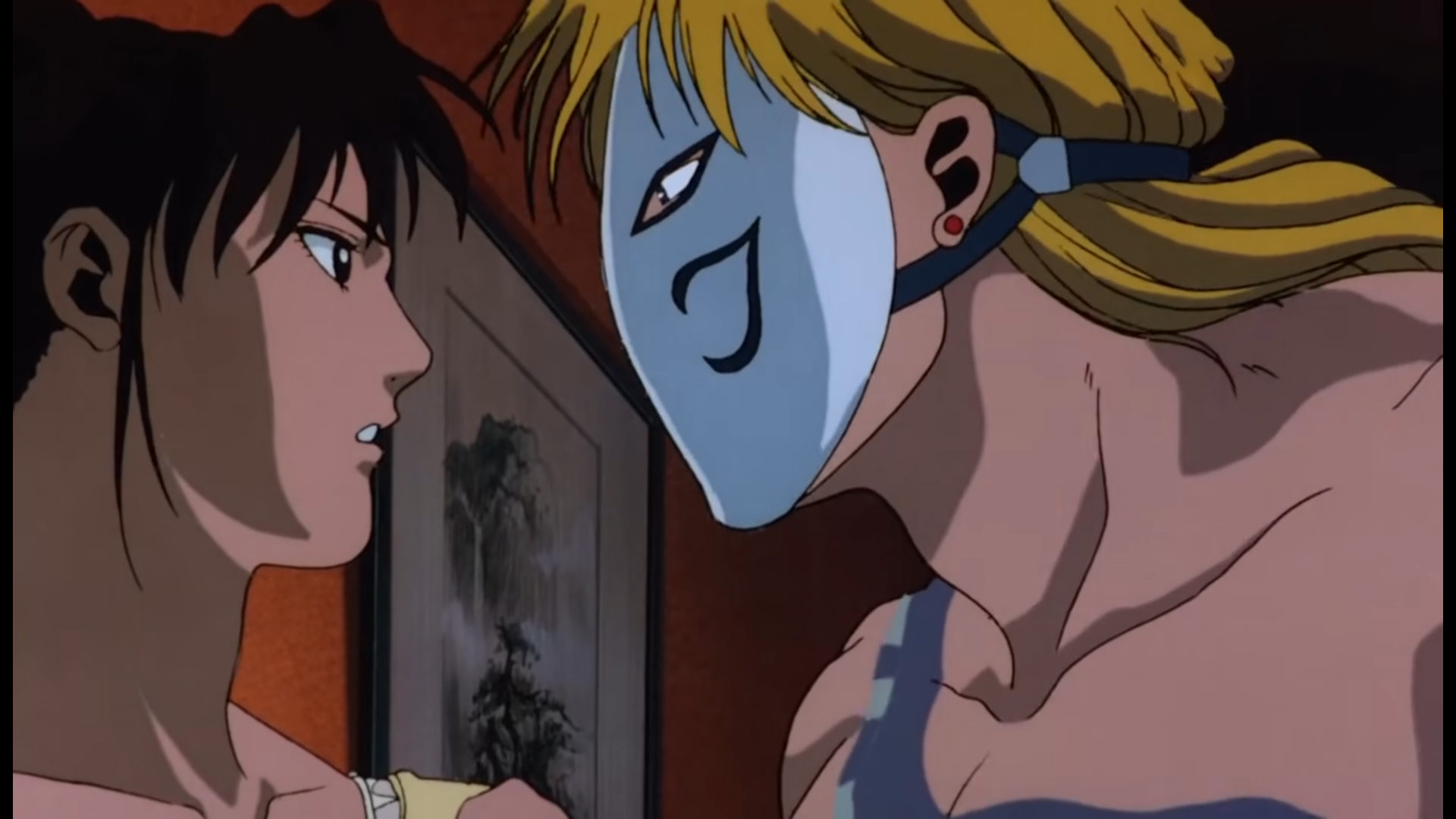
The Animated Movie focuses not only on series poster boys Ryu and Ken and keeps their fireball firing martial arts intact but it has a deliciously over-the-top evil M. Bison and still manages to rope the likes of Guile and Chun-Li into the core storyline as well. In 100 minutes it manages to show pretty much the entire cast of Super Street Fighter II, all with their original designs and with some truly great fight scenes with fluid animation and often brutal violence, all linked to an actual singular plot that’s easy to follow and leads to a spectacular finale. Whether you want the classic 90s Manga Entertainment “must add swearing to up the age rating” dub or stick to the original Japanese voice track, you’re bound to have a great time in front of the TV. In the decades since there have been many attempts to adapt other fighting games into anime, from Fatal Fury to Tekken, BlazBlue and even other Street Fighter games but none have come close to this mid-90s classic.
What are your favourite video game adaptations in anime and manga? Let us know in the forums!


